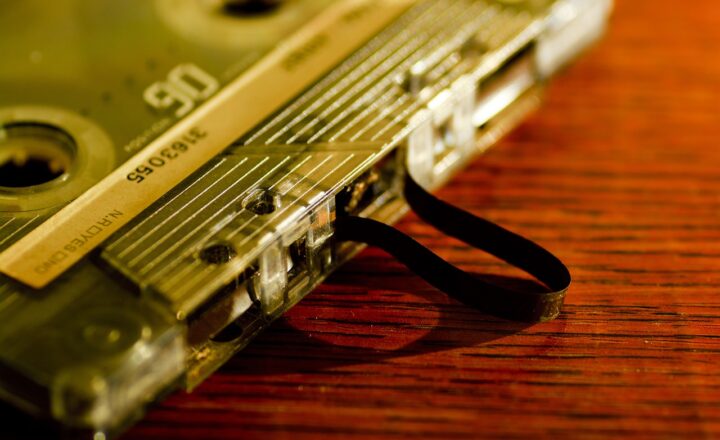
The 1980s was a transformative decade for cinema, giving us some of the most iconic movies that have shaped Hollywood as we know it today. From groundbreaking special effects to memorable characters and unforgettable soundtracks, the films of the 80s laid the foundation for modern blockbusters. In this article, we will explore the hidden influences of 80s movies on today’s cinematic landscape, analyzing key elements such as storytelling techniques, character archetypes, and visual styles that continue to resonate with contemporary filmmakers.
1. The Rise of the Blockbuster Phenomenon
The decade kicked off with the advent of blockbuster films, leading to a significant shift in the industry. Movies like “Star Wars” (1977) and “Jaws” (1975) had already set the stage, but 80s hits like “E.T. the Extra-Terrestrial” (1982) and “Indiana Jones: Raiders of the Lost Ark” (1981) solidified the concept of summer blockbusters, with audiences eagerly awaiting their releases.
These films introduced the idea of a film being a cultural event, encouraging massive marketing campaigns, merchandise tie-ins, and other revenue streams that are now commonplace. The box office successes of 80s movies established a formula that studios continue to follow today.
2. Iconic Characters and Their Archetypes
The characters we met in 80s cinema are often archetypes that have become staples in modern films. The hero’s journey, a narrative framework first articulated by Joseph Campbell, was showcased in numerous 80s films:
- The Reluctant Hero: Characters like Luke Skywalker and Indiana Jones embodied this archetype, setting a precedent for relatable protagonists who faced internal and external conflicts.
- The Mentor: Figures like Mr. Miyagi in “The Karate Kid” (1984) provided guidance and wisdom to the younger hero, a trope that continues to appear in films like “The Hunger Games” and “Star Wars.”
- The Villain: Memorable antagonists such as the Terminator and Voldermort have shaped modern cinematic villains, who are often complex, and multifaceted, providing more than just obstacles for the hero.
These character types can be found in present-day blockbusters, showcasing the lasting impact of their 80s predecessors.
3. The Power of Soundtracks and Music
One cannot talk about 80s movies without admiring their captivating soundtracks. The synergy between film and music was exemplified in films such as “Footloose” (1984) and “Dirty Dancing” (1987), where the music itself became a vital storytelling tool.
Modern filmmakers have also recognized the importance of music in enhancing the emotional weight of their narratives. The use of popular songs in trailers and pivotal scenes has been influenced by the techniques refined during the 80s:
- Film Scores: Composers like John Williams and Vangelis wrote memorable scores that heightened the cinematic experience. Today’s blockbusters often feature similarly impactful entries by composers like Hans Zimmer, who draw from 80s orchestrations.
- Curated Soundtracks: Films such as “Guardians of the Galaxy” (2014) showcase a revival of the curated soundtrack trend, reminiscent of the 80s when music would drive box office popularity.
4. Special Effects and Visual Techniques
The 80s were a pivotal time for special effects. Movies like “Tron” (1982) and “The Last Starfighter” (1984) pushed the boundaries of technology, utilizing computer-generated effects that would set the stage for what was possible in filmmaking.
Today, while digital effects are more commonplace, many filmmakers still draw inspiration from the practical techniques used in the 80s. The tactile quality of practical effects can often evoke a sense of nostalgia in modern audiences,
Some notable influence aspects include:
- Practical Effects vs. CGI: There is a growing trend among filmmakers to blend practical effects with CGI, reminiscent of the balance achieved in films like “The Thing” (1982) and “Ghostbusters” (1984). Modern films like “Mad Max: Fury Road” (2015) have echoed this philosophy, embracing the gritty and tangible feel of practical effects.
- Innovative Cinematography: The iconic photography styles, including the use of vibrant colors and dynamic camera angles in films like “The Breakfast Club” (1985) and “Blade Runner” (1982), have influenced the visual language of many contemporary filmmakers, leading to modern homages and adaptations in cinematography.
5. Genre Blending and Narrative Complexity
The eclectic mix of genres in 80s films, as seen in “Ghostbusters” (1984) with its blend of comedy, horror, and science fiction, paved the way for genre-bending films of today.
Modern films like “Get Out” (2017) and “Knives Out” (2019) draw from this tradition, intertwining different narrative elements to create unique viewing experiences. The fluidity between genres has allowed for greater creativity and innovation in storytelling, reflecting the versatility that was pioneered during the 1980s.
Conclusion: The Enduring Legacy of 80s Movies
The influence of 80s movies on today’s blockbusters is undeniable. This iconic decade provided the foundation for many elements that remain prevalent in modern cinema: engaging narratives crafted from archetypes, captivating soundtracks that define emotion, innovative special effects that blur the boundaries between fantasy and reality, and a spirit of genre-blending that allows filmmakers to explore new storytelling avenues.
As cinephiles, it is essential to appreciate the hidden influences of 80s films that continue to shape our cinematic experiences today. Whether it’s a joyous nostalgia for the past or an appreciation for the creative evolution, the 80s remain an essential chapter in the story of film that continues to inspire storytellers around the globe.






